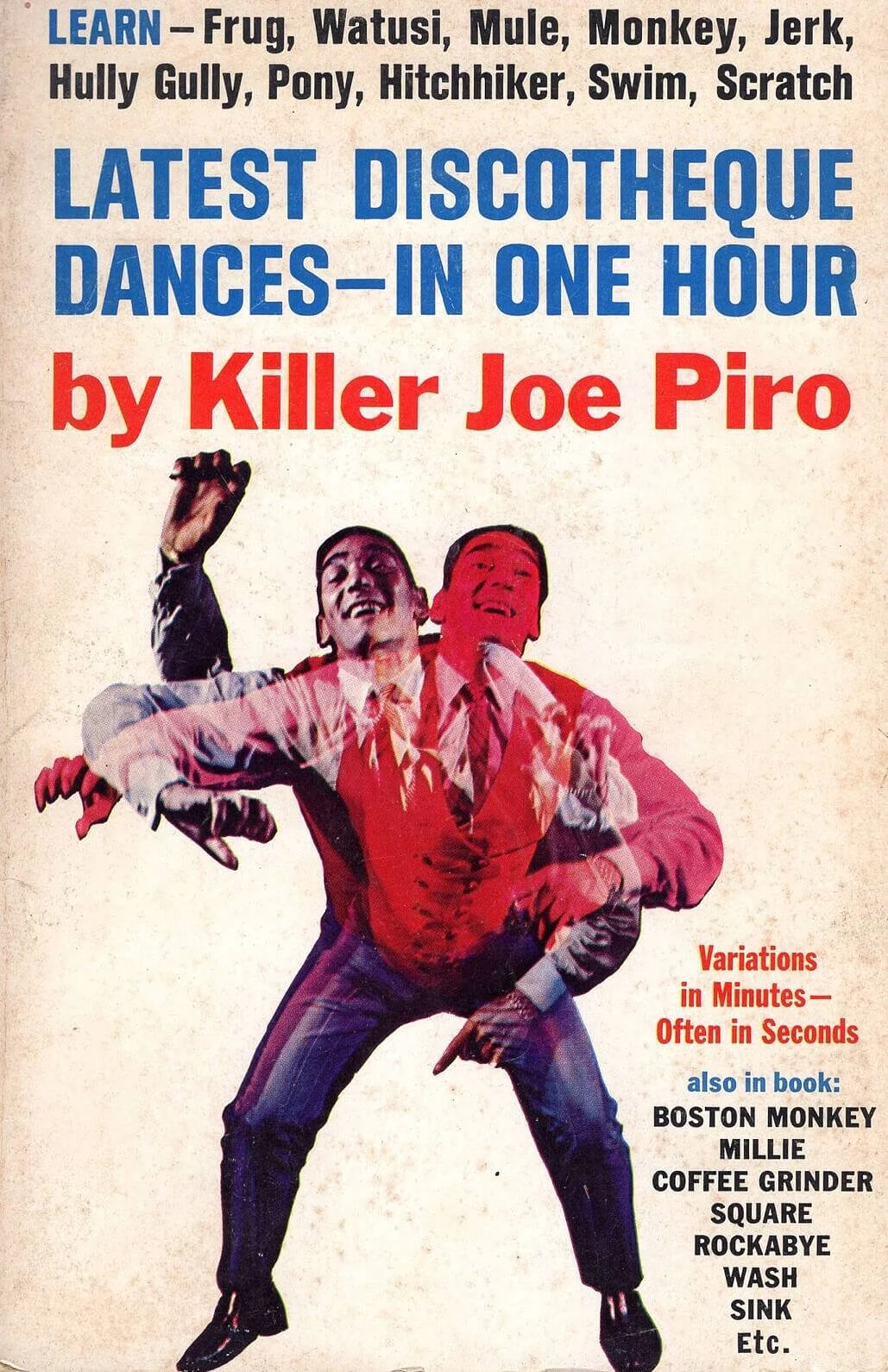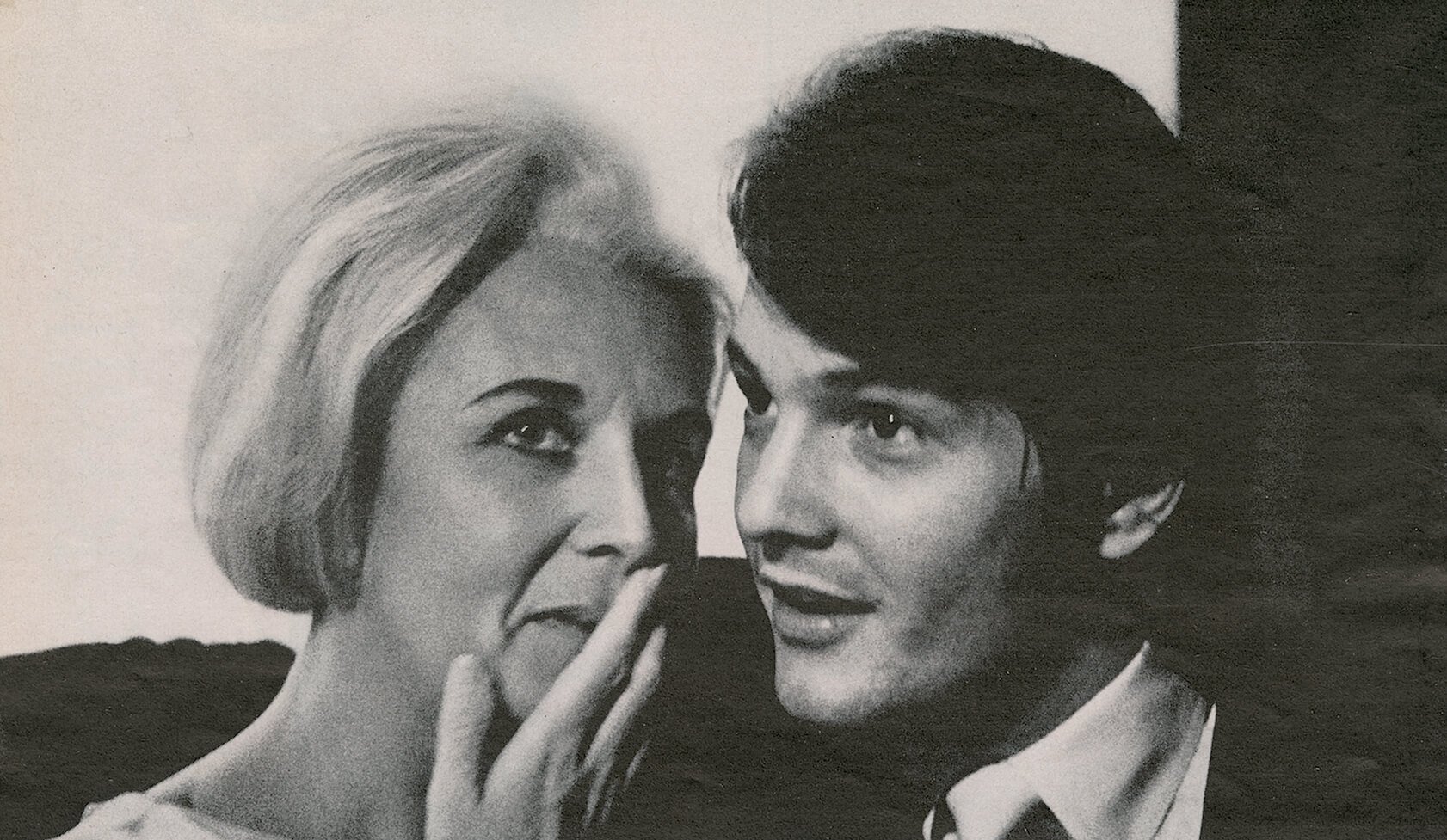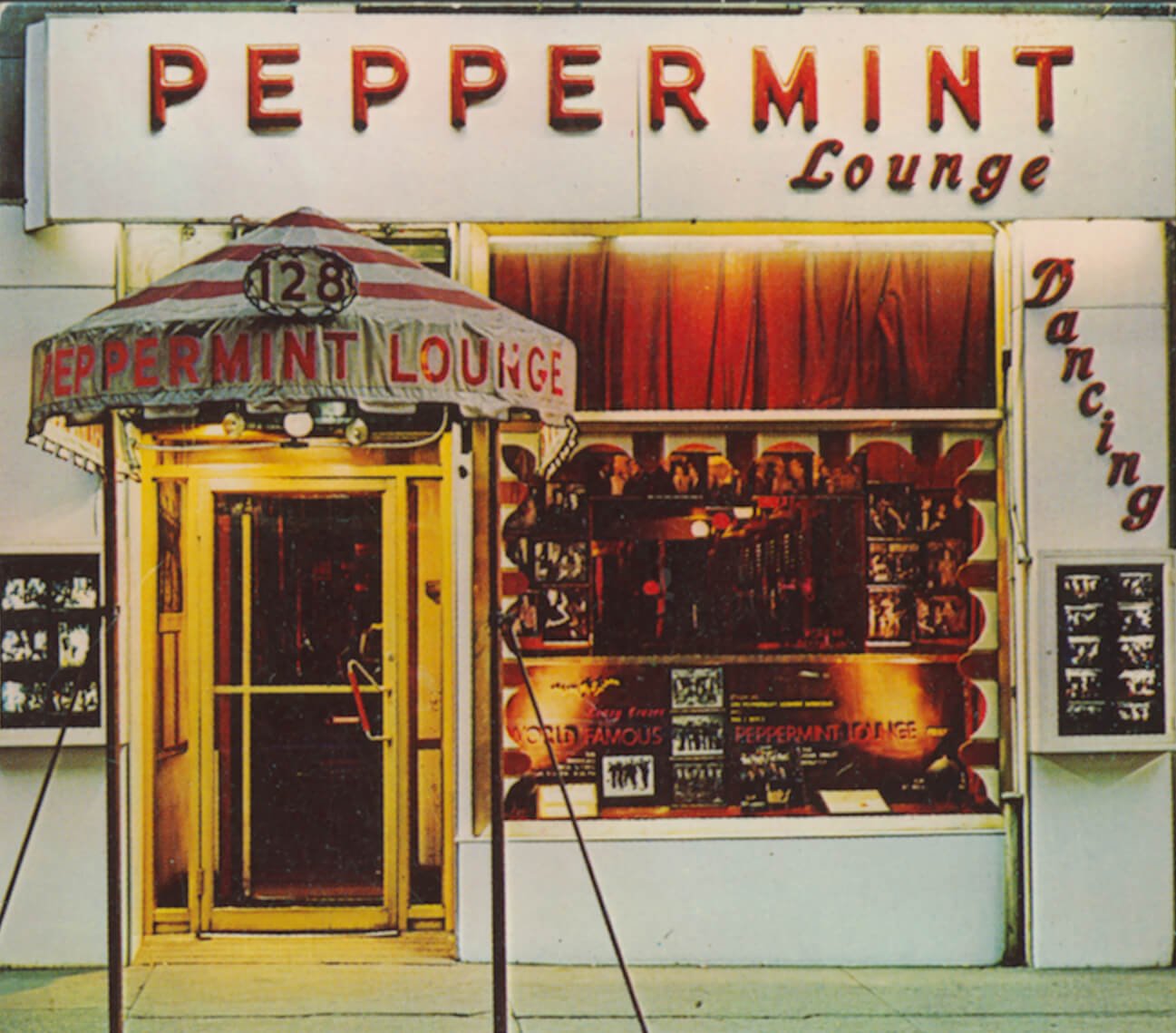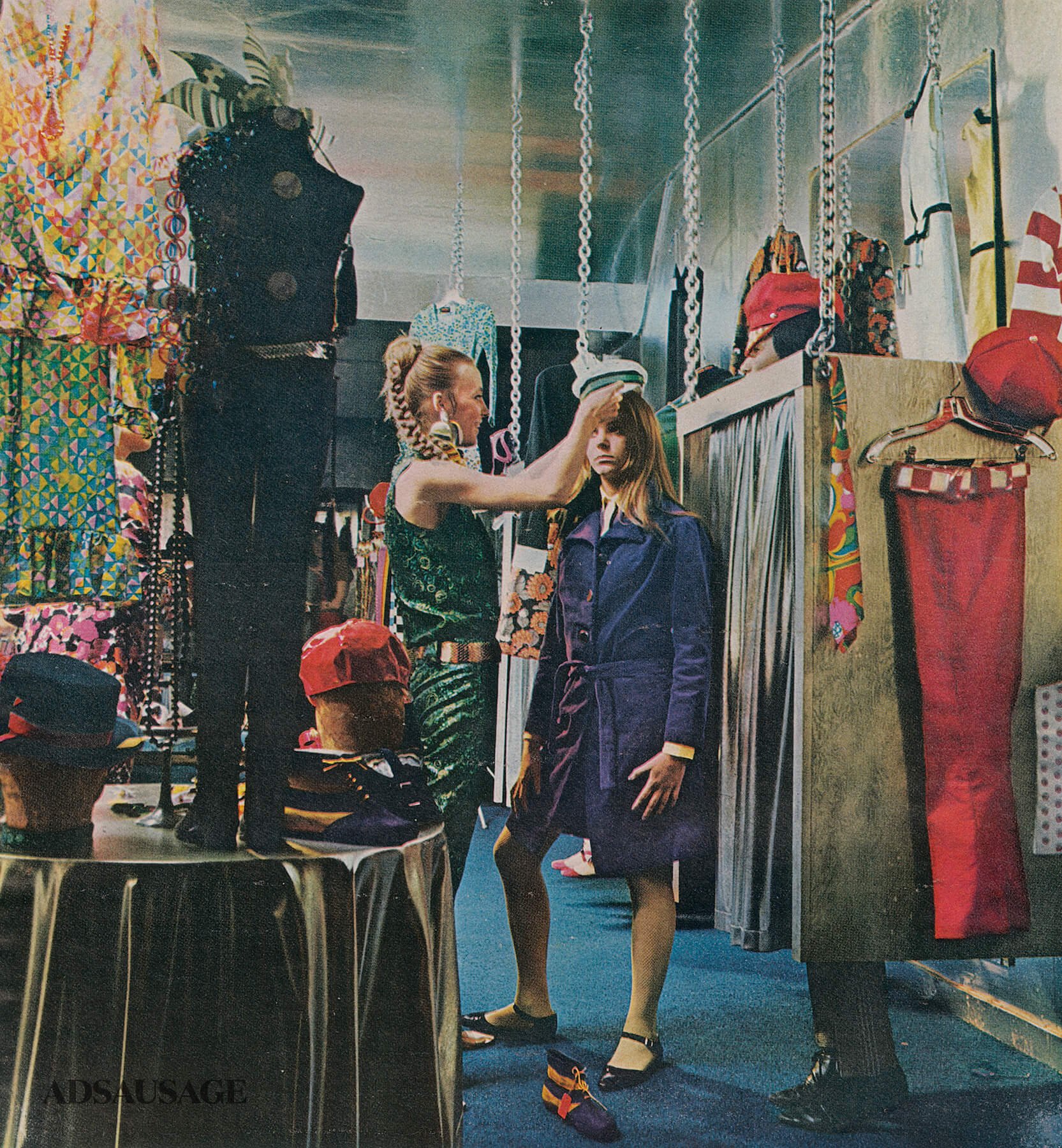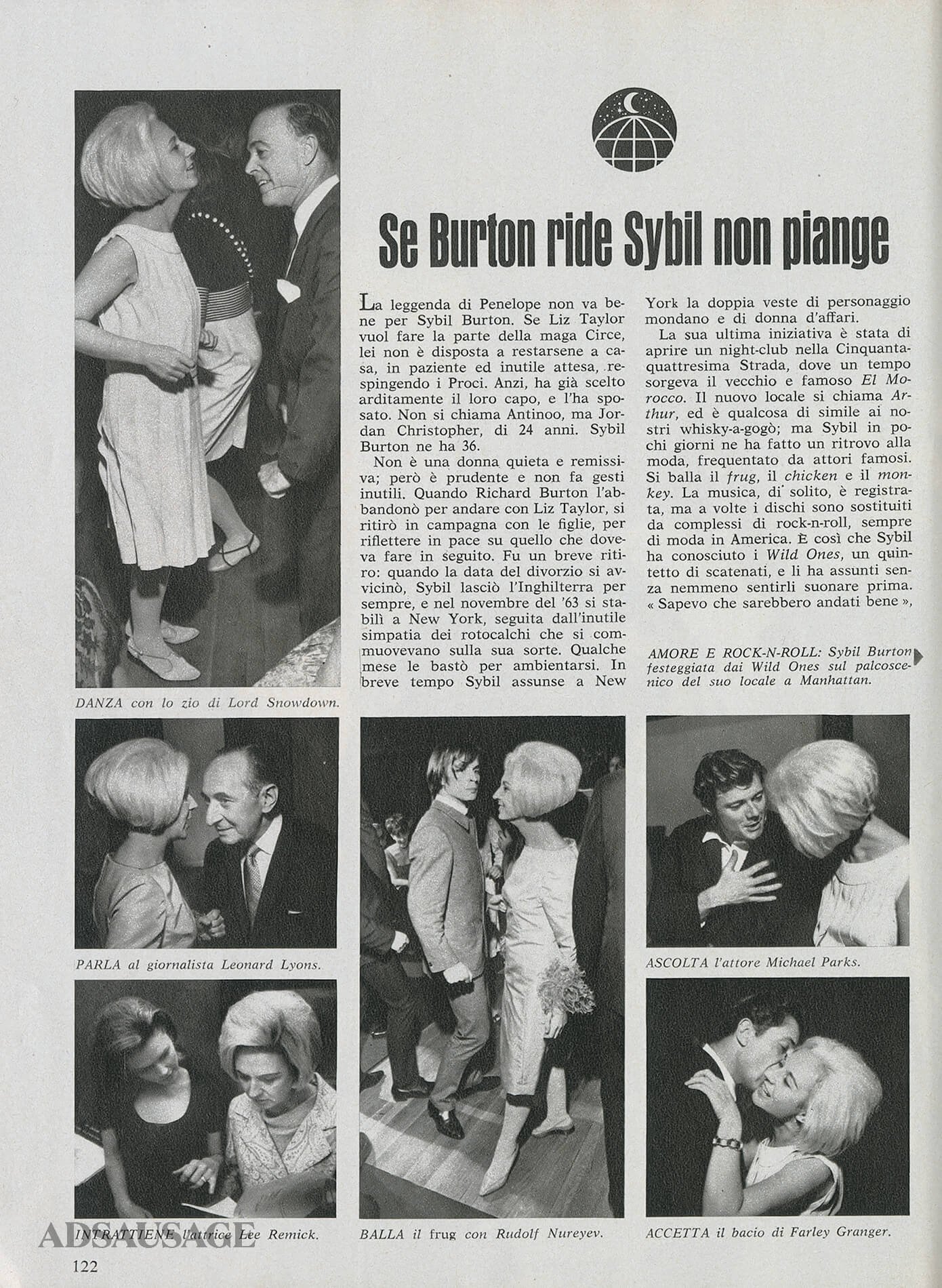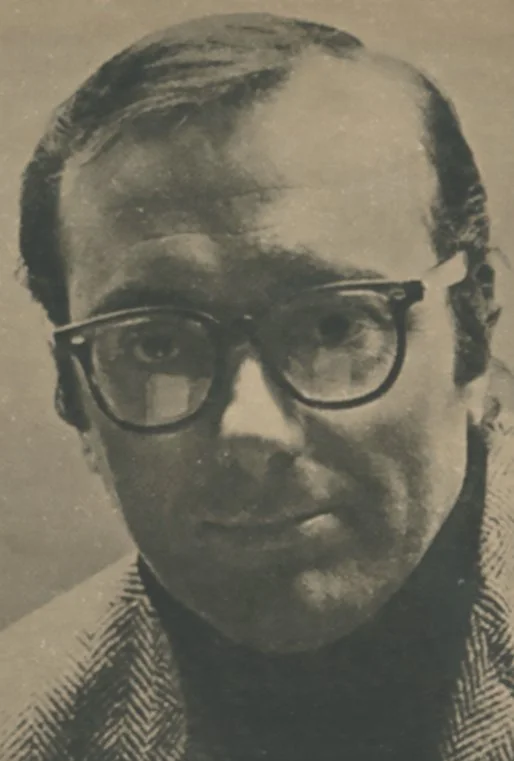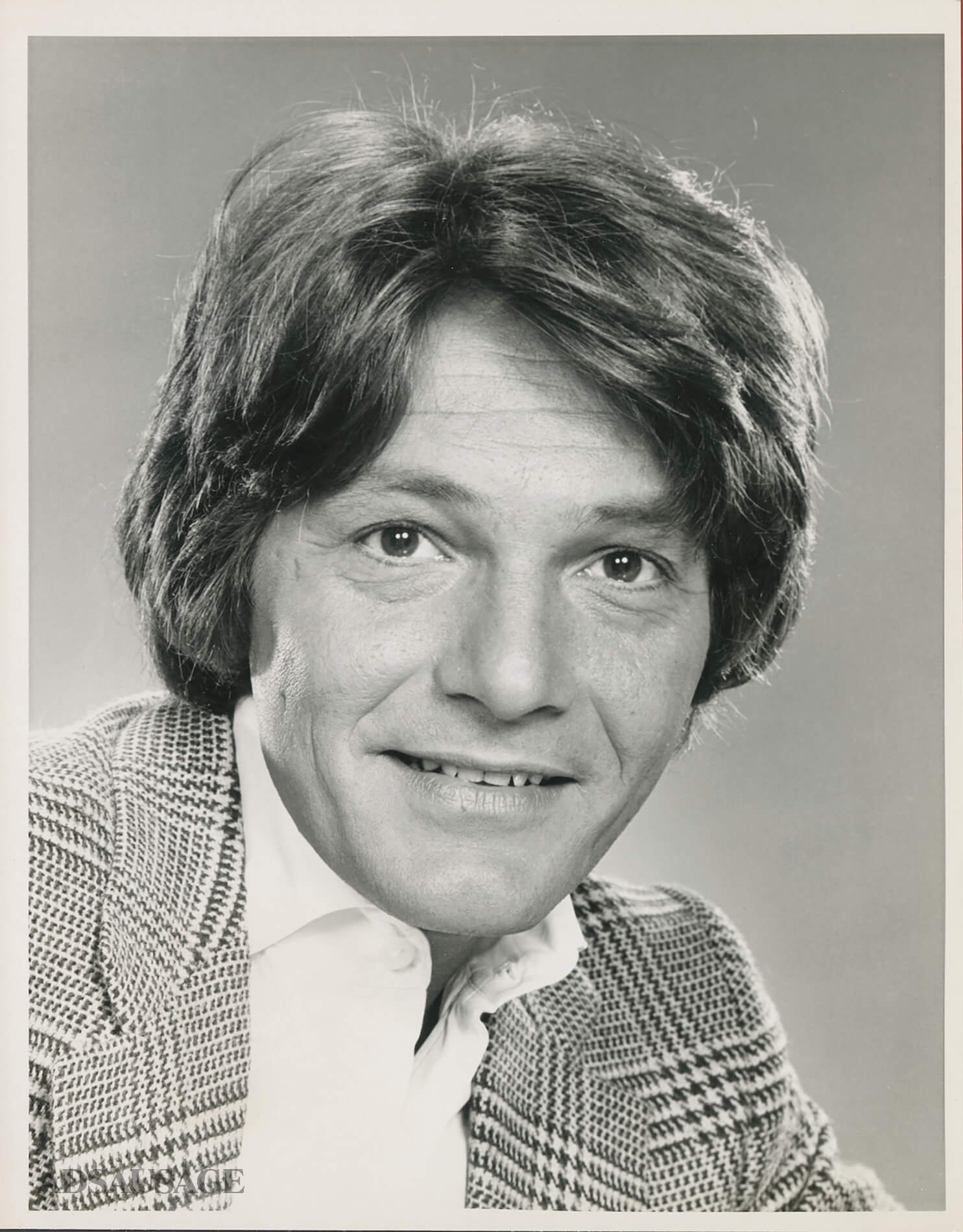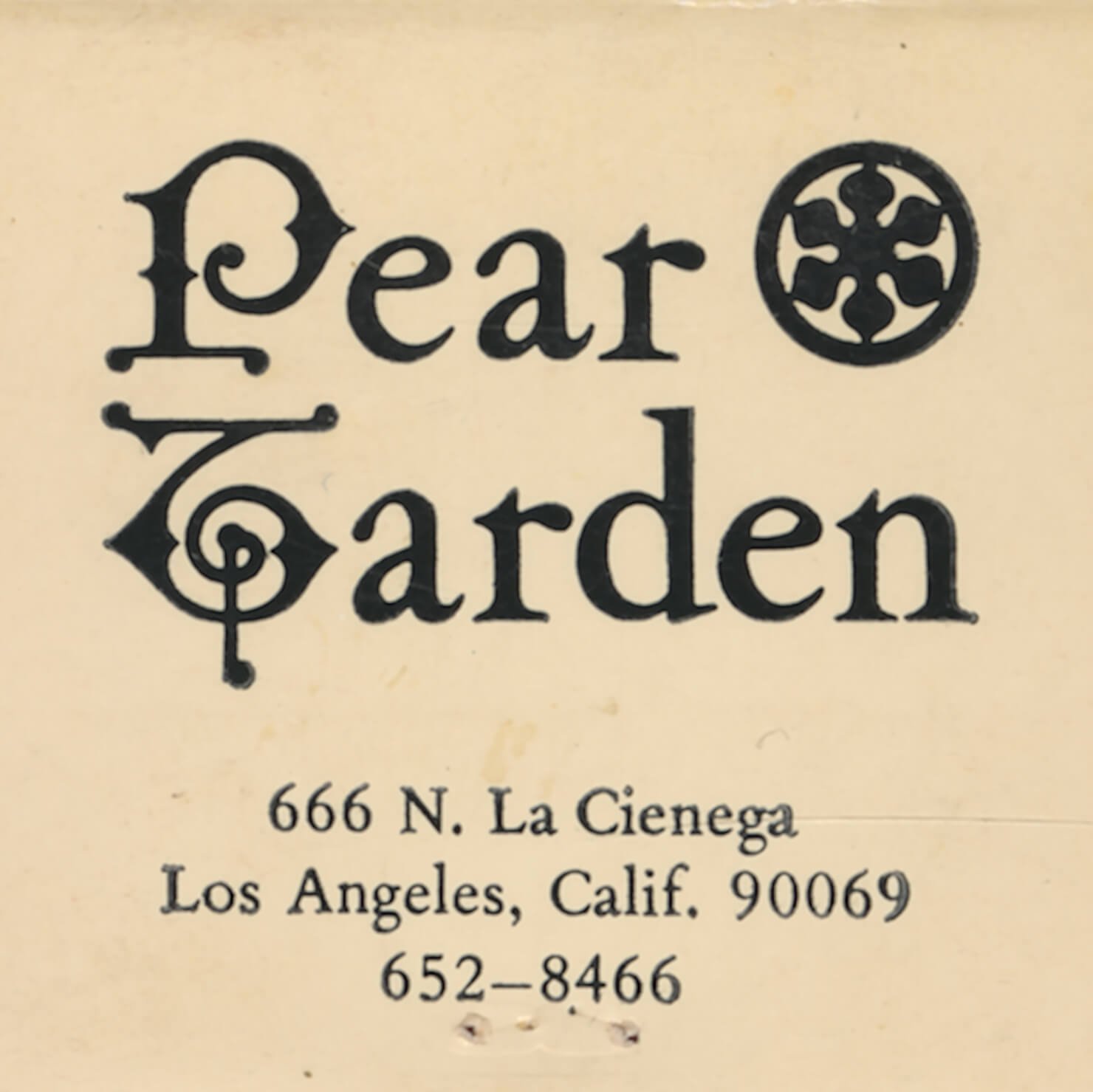Arthur
Clearly, this has nothing to do with a brown aardvark.
Pronounced Deeskoteks
London had Annabels, Brussels had Chez Paul, Miami had Il Mio, Paris had New Jimmy’s, and in New York it was Le Club. Not to be outdone, Cedar Rapids had its own discotheque in the Lindale Plaza Mall.
And by the mid-1960s, la discothèque made its way to Los Angeles. The Whisky and Gazzarri’s on Sunset were picking up speed, the Daisy in Beverly Hills opened in August 1964, and department stores like The Broadway were selling black ruffled party frocks with names such as The Watusi, The Frug, and The Surf. Perfect attire for the posh mink-and-diamond set.
On the small screen, local Los Angeles broadcast station KTLA (Channel 5) ramped up its teen viewership in mid-1965 by adding Lloyd Thaxton’s “Shebang” to its variety schedule. Apparently, kids weren’t turned on by their other show, Polka Parade.
Channel 13 hit the dancefloor with “Hollywood Discotheque”, hosted by Emperor ‘Bob’ Hudson, a deejay with radio station KRLA.
To educate the easy listening squares, the funny French word was explained as a mix of dance party and phonograph records, sometimes played at high velocity by femme djs.
However, a new club landed on the horizon in 1967.
Located on Restaurant Row at 666 La Cienega Blvd., Arthur operated on the former site of the Oyster House restaurant — opened in 1955 by Boyd O’Donnell and Wally Branch.
The Oyster House once reigned as the best place in town for seafood, but after years of decline, the eatery came under new management in 1965. Not long after, the Eukaryota eatery closed for good (and presumably exhumed the overwhelming scent of Maine Lobster).
By then, Branch had opened the Yankee Pedlar Inn on Riverside Drive in Toluca Lake. The enterprising restaurateur later revamped Hollywood’s Room at the Top in Hollywood.
After the restaurant closed, plans for a new sports-themed restaurant called Sportslamp were drawn up, but nothing materialized.
In the Constant Company of Other Women
But two years before the West Coast variant opened its doors, the club’s roots began in New York.
Leading the charge were Edward Villella, Cord Hamilton (manager and then club president), Murray Drucker, and Sybil Burton -- ex-wife of hell-raising adulterer and actor Richard Burton.
What I have done is to move outside the accepted idea of monogamy without physically investing the other person with anything that makes me feel guilty. So that I remain inviolate, untouched.
Richard Burton interviewed by Kenneth Tynan for Playboy, September 1963.
Writing for the New York Post, Nora Ephron called Sybil “the heroine of the stickiest mess in the history of sticky messes.”
The mess in question was the torrid affair between Richard Burton and Elizabeth Taylor, which made headlines worldwide.
The Sydney Morning Herald referred to Sybil as “little more than a world-wide object of pity.” but followed up by saying she had emerged as a “dazzling, witty and an immensely chic woman.”
Citing abandonment and cruelty, Sybil Burton filed for divorce in 1964, leaving her Welsh thespian partner to marry the homely Elizabeth Taylor while the ink was barely dry. After the very public split, Sybil Burton walked away with a home in Switzerland, alimony in the region of $1M (additional money would follow), and relocated to New York with her two daughters.
It was there Sybil Burton was able to bolster Arthur’s first location.
The first whiff that something new was happening began in early 1965 when papers reported on Burton’s latest venture, a discotheque called The Alfred — which they incorrectly attributed as the favorite phrase of The Beatles. Reports on the Fab Four’s involvement varied, with some writing that loveable Ringo was one of the backers, while others said he donated photographs.
By then, the girl from the Welsh valley was well known around the city's hotspots. She appeared on ABC's The Wild World of Discotheque, where she took dance lessons from jet set choreographer Joe Piro.
The celebrity-stacked backers for East Coast Arthur included Leonard Bernstein, Julie Andrews, Rex Harrison, Harold Prince, Lee Remick, Betty Comden, and Adolph Green. Various reports noted that Burton raised $88,000 by selling eighty-eight shares at $1,000 apiece.
The former Mrs. Burton was a casting director and a financial supporter of the Establishment Theater Company, which was located above the club that was about to open. Despite being called a "freakish, 18-karat celebrity" by Look magazine, she continued to pursue her various ventures.
A Wild One
Sometimes referred to in the press as “The Boy” (given he was 14 years her junior), Sybil Burton and singer Jordan Christopher (nè Zankoff) tied the knot in June 1965 — bandmate Charles Alden was best man.
The formerly married handsome young rock and roller from Ohio met Burton at the Peppermint Lounge in New York, where his band The Wild Ones were tearing it up.
World Famous Peppermint Lounge, located at 128 West 45th Street, New York. The striped home of the twist went new wave in the late 1970s, and took over the spot formerly held by the Electric Circus on 5th Avenue in 1982.
As fate would have it, Jordan’s band triggered the hiring of Terry Noel as Arthur’s resident DJ. Noel, a Syracuse-born art student, was known as the original mixer and former roommate of Sybil’s new beau.
The five-person combo remained the house band at Arthur throughout 1966. However, the good-looking frontman departed after releasing their first album for United Artists, The Arthur Sound (featuring Sybil on the front cover, shot by Richard Avedon).
One year later, Christopher appeared in the riotous comedy The Fat Spy, starring Jayne Mansfield. The band made a brief appearance.
With new decor and sound system ready for its May 1965 debut, the East Side’s latest hotspot was located on the site of the original El Morocco at 154 East 54th Street.
El Morocco
Known as the capital of Café Society, the famous zebra-striped supper club opened during prohibition in 1931.
After John Perona died in June 1961, his son Edwin took over. He relocated the club to a more spacious and extravagant venue at 307 East 54th Street.
Edwin indicated little interest in running a club, and ownership changed hands in 1964 when British casino operator John Mills took over. The portly, jet-setting businessman with a fondness for women, cigars, and liquor operated London’s Les Ambassadeurs, the Garrison Club, and Le Cercle — all membership clubs.
The Strollers Theater Club took over the original El Morocco, which closed in 1964.
The veteran watering hole – known locally as “Elmo’s,” clung to life in 1970 with rumors of a potential purchase by Russian aristocrat Serge Oblensky. Whatever the case, El Morocco shut its doors that year and was resurrected as a private club.
Opening on May 5, 1965, proprietor Sybil Burton (dressed in hot pink silk with ostrich feathers) opened Arthur for a few close friends, including Margot Fonteyn, Mike Nichols, and Leonard Bernstein.
Cementing the club’s assured future was another guest, Rudolph Nureyev, who was pictured dancing with Sybil Burton. Arthur was “in,” baby, when the image hit the AP wire.
Sybil Burton and Rudolph Nureyev wondering why the deejay suddenly played the Crossroads theme by Tony Hatch.
Music came courtesy of house band The Wild Ones, with special guests, The Four Seasons.
Within a few months of Arthur’s opening, the chic and fabulous set were drawn to Manhattan’s hottest and maddest spot. Orchestrating the velvet rope was club manager Mickey Deans, who briefly became Judy Garland’s fifth and final husband.
This is quite obviously, an ashtray. It was said that Sybil Burton oversaw all the club’s details, including these items — so it’s only fair that she gets the credit for utilizing Robert Hunter Middleton’s Umbra typeface. Again, this is an ashtray.
The club was a success, which Burton attributed to timing, "We opened just at the moment when Britain, thanks to The Beatles, Mary Quant and her miniskirts, the movies, the plays, became suddenly very fashionable. Just right timing…"
Arthur International intended to license the rights to the Manhattan discotheque. The startup cost was $75,000.
A year after its inception, Life magazine delved into the emerging discotheque scene in its article "New Flash Bedlam of the Discotheque." The article referred to Arthur as the "granddaddy of the new clubs" and identified other popular spots in New York, Los Angeles, and Chicago, such as Cheetah, The World, The Trip, and Le Bison.
Lines to get in were long, with patrons clamoring for a spot well past midnight – New York City bars closed at 4:AM. In 1966, Burton said, “You don’t even have to wear a tie to get in. Arthur encourages people to dress wild.”
However, Arthur was not without its issues, as described in the March 1965 issue of Ebony magazine;
Located as it is on Manhattan’s plush East Side, Arthur has had some difficulty in attracting Negro patrons. Once it was charged with discrimination, though the case proved baseless when brought to court.
Even Gene (club host), said: “New York’s night life is still a bit prejudiced, but at Arthur we’re not, and we’d like to see more Negroes here.
In November 1965, Look magazine published an article about a club called "The Wild Scene at Arthur." During an interview, Sybil Burton was asked whether her ex-partner was likely to visit the club. She replied, "I don't think so, luv. Richard hates this type of place."
The End is Near
At the ripe old age of four, the club was over. In June 1969, its obituary was written in the press ("Novelty fades for discotheque"). A fatal shooting of an on-duty policeman right outside the venue in 1968 did little to help.
A month after closing, the New York club was reported to be purchased by Olivier Coquelin.
Jordan Christopher bemoaned the club's passing, "I feel the discotheque is becoming passé in this country — but not in Europe." The former Wild One added that the original investors made a profit and were planning additional Arthur's in Stockholm and Paris.
There’s a New Club if You’d Like to Go
Designed by architect Conrad Ensign for Dorman/Munselle, the West Coast replica for pretty young people differed from its nearby competitors by forgoing membership, which was de rigueur for clubs such as The Candy Store, The Daisy, or The Factory. The new over-21 club on La Cienega’s Restaurant Row was free during the week.
As it was before, a catalog of various names jumped on board to finance the club: Natalie Wood, Roddy McDowell, Julie Andrews, the Mamas and the Papas, Diahann Carroll, Leslie Uggams, James Galanos, and Hal Prince – some of whom reportedly coughed up $1000.
Managed by Cord Hamilton, Arthur Club West (now franchised) featured dining in the Pub Room, which featured a wall-size “Peanuts” mural designed especially by Charles Schulz. The main room, where all the maddest, nuttiest ravers sweated on the dancefloor, featured Kent and the Candidates — although other bands would also appear.
Deejay Jerry King operated the booth, who, according to Billboard magazine, “knows what’s what in R&B.”
Venerable city bible Los Angeles Magazine explored the dancefloor debauchery in 1968 with a four-page spread.
The star-studded opening for West Coast Arthur on December 29, 1967, was attended by showbiz luminaries, including George Axelrod, Paula Prentiss, Zsa Zsa Gabor, Jim Brown, Samantha Eggar, Marlo Thomas, Sal Mineo, Diahann Carroll, Mae West.
American gossip columnist Joyce Haber covered the glamorous event for the Los Angeles Times;
The main room has low tables and lots of mirrors and a variegated, mod glass mural. It has twinkling blue lights over the dance floor, and enough noise to satisfy any addict of the boo-ga-loo.
San Francisco got its very own disco treat when Arthur opened on the ground floor of The Cannery at the intersection of Beach and Leavenworth. Plans to open in the Huntington Hotel were scrapped over construction costs. Musical entertainment for the Bay Area location came from The Fuzzy Bunnies, featuring ex-Wild One, Chuck Alden, and a one-time sit-in from Temptations vocalist David Ruffin.
Although many from the Social Register set livened up the dancefloor, the only celebrity to attend the opening in December 1968 was Roddy McDowall. Perhaps a sign things were not well.
The End
As it was, Arthur on La Cienega was in trouble. Natalie Wood and Roddy McDowell resigned, and Sybil Burton pulled the name and license – apparently over mismanagement.
The club struggled at a cost of $100,000 — despite being labeled a faithful and improved copy of its New York counterpart.
A few months after Arthur West was cut, the original Manhattan location on 54th Street also met its fate — a victim of the times where newer clubs replaced the frug with acid rock.
Dancefloor Downfall
Lamenting the demise of disco in 1970, Daisy Club owner Jack Hansen said, “Some people are never satisfied with themselves, so they go from one place to another looking for satisfaction.” Adding to the gloomy outlook, former Factory owner Ronald Buck commented, “The popularity of any club or discotheque is strictly dependant on the fact that it’s an innovation. After a while, the interest wears off.”
The Factory, 1967. Photo by Julian Wasser.
Putting the final stamp on the situation, Sybil Burton said, “The trouble with being listed as ‘in’ is that if you’re ‘in,’ sooner or later you must be ‘out.’”
Whatever the club’s future, the owners moved to Malibu, where Christopher was shooting “Angel, Angel, Down We Go!” — co-starring former club investor Roddy McDowall. The movie was retitled Cult of the Damned and doubled with AIP’s The Vampire Lovers.
The downtown Detroit location of Arthur (located in the 1928 Book Building) closed its doors in October 1969, this was followed by San Francisco, which auctioned off the club in March 1970. Rumors of mob involvement at the Texas location fueled it’s eventual whacking.
After the demise of East Coast Arthur, Parisian nightclub impresario Olivier Coquelin, Pierre Groleau, and Jean Fernandez purchased the spot that reopened as Hippopotamus - a reservation-only club.
Coquelin's venture had financial backing from Michael Butler, Alan Jay Lerner, Sidney Lumet, Rex Reed, and Oscar de la Renta, similar to Sybil Burton's Arthur.
Coquelin summed up the vibe.
We dig the cat with the Christian Dior tie and the Pierre Cardin suit, the one who’s got something to say.
In late-1972, Coquelin was forced to move Hippo (as locals referred to it), when a number of buildings on the block were being converted into an office building.
Disco Daddy…Olivier Coquelin.
Covering the transformation of disco in July 1974, the New Yorker magazine shrewdly wrote, “The New York disco dream is a thousand different trips under a bobbing mirrored ball. The jet-setters who clustered about Arthur and Salvation, discos of the affluent sixties, are gone, off in Haiti.”
And that’s precisely where Coquelin ended up. The congenial globe-trotting host first opened Habitation Leclerc, an opulent hotel near the center of Port au Prince, and later settled in the tiny fishing village of Petit-Goâve with Relais de l’Empereur.
The beautiful old hotel was destroyed in an earthquake at a later time. In the late 1970s, Pierre Groleau, a former waiter at Los Angeles eatery Ma Maison and Coquelin's former colleague, was briefly involved in a Hollywood scandal. The embattled executive of Columbia Pictures, David Begelman, found himself in some nasty business as he wrote fraudulent cheques.
One of those cheques was written to Groleau for $25,000, allegedly for consulting work on two French films the studio was making. However, Groleau was unaware of any such contract, and the money was deposited in a fake bank account that Begelman used to purchase artworks.
Bumbles
In Los Angeles, Christopher Jordan kept his dancing shoes and joined forces with ex-Factory backer Anthony Newley in his new private club, Bumbles. The British singer-songwriter and husband to the future Alexis Colby opened the new venture at 828 South Robertson — formerly a revolving door of eateries: Castle Restaurant, Delmonico, Francois, and La Ronda.
Their venture opened in July 1969 and was managed by Brian Morris, previously with London’s Ad Lib club. The city hotspot closed in 1973 and was replaced by the non-profit club Pips International, a favorite hangout of Lucille Ball. The club survived until the early 1980s.
Life after Arthur
After cashing out with Arthur, the jetset couple lived a quieter life away from the scene. Jordan Christopher remained busy with movies and theater, which included appearing on stage with Patrick Macnee in Anthony Shaffer’s Sleuth in 1973.
Jordan Christopher, 1980. Still taken from the TV show, Secrets of Midland Heights.
Sybil Burton, formerly Sybil Williams, was married to Jordan Christopher until he died in 1996 at 55. After her husband's passing, Sybil became the artistic director of the Bay Street Theater in Sag Harbor, Long Island, which she had co-founded in 1991.
Sybil Christopher passed away in 2013 at the age of 83. She was survived by her daughter, Kate Burton, who is an actress and had tied the knot with director Michael Ritchie in 1985.
What Became of Arthur?
After the West Coast variant of Arthur closed, the La Cienega spot became the first American location of Tokyo’s famed Pear Garden restaurant, which opened in September 1969. The Japanese/Korean eatery, a favorite of singer Minnie Ripperton, survived until around 1983.
Years later, the corner spot in West Hollywood changed address, and was reborn as the ultra-modern restaurant Metropolis, which gave way to a number of other restaurants over the years.
The Gordian Knot
The Gordian Knot, a group hailing from Mississippi, was labeled as "one of the few groups since The Beatles to possess genuine charm" but had a relatively brief career. They released their self-titled album in 1968 on Verve, which received little promotion, and as a result, the band fell off the radar.
With Nancy Sinatra on her United Service Organisations tour of South Vietnam, 1967. Not sure who the chap in the back is, but I’m sure he was glad to be there. The package also included Redd Foxx.
Still, between 1967 and 1968, the septet could be heard all over town: The Factory, Santa Monica Civic (supporting the Dave Clark Five), Carousel Theatre (supporting The Byrds), PJ’s (supporting The Fifth Dimension), and at Tony Ferra’s Rag Doll in North Hollywood, where they rehearsed with Sinatra before the USO tour.
According to sources, when Vanessa Redgrave and David Hemmings threw a Hollywood party for director Michelangelo Antonioni in January 1967, the in-demand band played “ear-splitting music.” Among the guests were Natalie Wood and Rock Hudson, who purportedly said, “I can’t dance to this music unless I’m high…”
The deafening band made their motion picture debut in Blake Edwards’ Peter Gunn and filmed bits for NBC’s Fred Astaire Show and the revamped Steve Allen Show on channel 5.
Taken outside the Los Angeles County Museum of Art on Wilshire Blvd. Doubling as a park bench is ‘Pirelli’, by Greek artist, Peter Voulkos. The bronze sculpture was exhibited at the museum in 1967 (American Sculpture of the Sixties).
The band was repped by famed talent manager Jerry Perenchio, who ran Chartwell Inc., a Beverly Hills management firm he founded in 1964. Perenchio hit paydirt with cable and pay-TV in 1971, promoting the “Fight of the Century” at Madison Square Garden.






